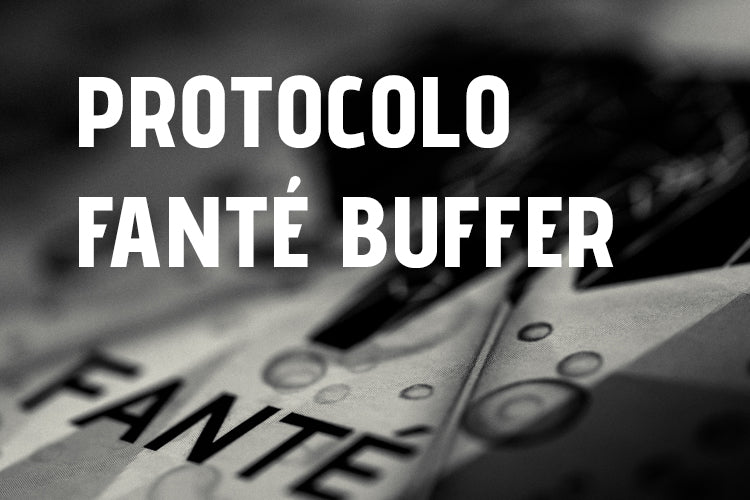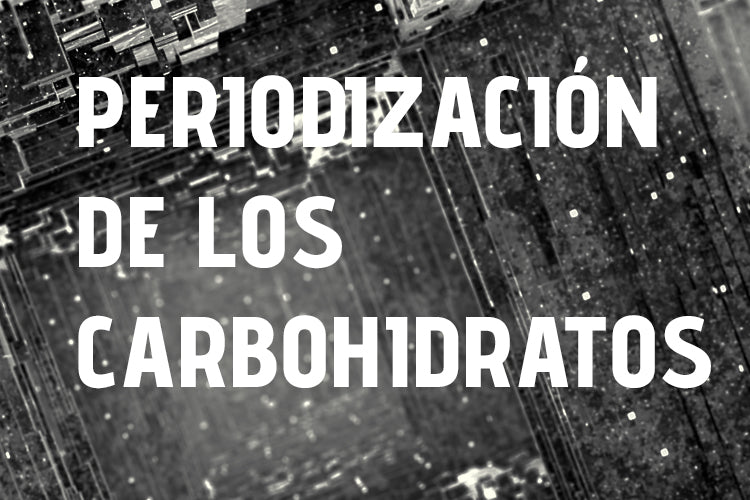What is it?
Bicarbonate is an endogenously produced extracellular anion and an integral component of the body's primary pH buffering system. During high rates of anaerobic glycolysis (inevitable during prolonged periods of intense exercise), muscle can produce excess hydrogen ions (H+), which results in metabolic disturbances and may ultimately contribute to fatigue.
Extracellular bicarbonate (ingested externally as FANTÉ BUFFER ) facilitates the elimination of these H+ and, to a certain extent, favors the body's ability to match the high rates of energy demand necessary to maintain muscle function when we train.
Numerous studies have shown that endogenous bicarbonate levels can be safely and acutely increased following ingestion of 0.2 to 0.3 g/kg of body weight of sodium bicarbonate. ( 1 ,2 ).
By consuming FANTÉ BUFFER , you'll be consuming between 0.15-0.2 g/kg of body weight if you're a beginner, and around 0.25-0.4 g/kg of bicarbonate if you're an advanced user, depending on your body weight. Always provide the recommended dose.
Additional bicarbonate attenuates the inevitable increase in intramuscular H+ synonymous with high-intensity exercise. Meta-analyses have reported that supplementation at these levels can result in an approximate 2–3% improvement across a variety of performance measures (e.g., power, velocity, work capacity, time to failure) during both single and repeated bouts of high-intensity exercise typically lasting 1–10 minutes in duration. ( 3 , 4 , 5 , 6 )
The 2018 International Olympic Committee Consensus Statement on Sports Nutrition concludes that sodium bicarbonate is one of five supplements that consistently improve performance in elite athletes.
How should I use FANTÉ BUFFER?
Current intake recommendations are to consume 0.2 to 0.4 g/kg body weight with a small carbohydrate-rich meal (1.5 g/kg CHO) approximately 2 to 3 hours before exercise. ( 7 )
Taking it with a small, high-carbohydrate meal promotes blood alkalosis and reduces the onset of gastrointestinal symptoms (common with high intake of this supplement). This method of administration would give athletes susceptible to gastrointestinal distress (which typically peak 90 minutes after ingestion) more time to resolve any potential problems before competition or training. ( 8 )
That's why, by using FANTÉ BUFFER , we would always be getting, depending on your body weight, around 0.2 grams/kg of bicarbonate and 1 g/kg of carbohydrates. The remaining 0.5 g/kg of body weight, as science has shown, would be obtained with two slices of white bread and jam (shown in the protocol image).

During what type of training?
Alicia Ávila Sanchez, co-founder of FANTÉ, a graduate in physical activity and sports and an expert in sports physiology, has created two examples for both cycling and running athletes.
It's important to keep in mind that this is an example and should be individualized for each athlete, including their training zones and watts. But generally speaking, we should use it during threshold training, during sessions aimed at improving VO2 Max.


Science behind it
We've already discussed many aspects of baking soda and the science behind it throughout this guide.
Furthermore, there is compelling evidence that bicarbonate use by athletes competing in high-intensity activities lasting 1 to 10 minutes, e.g., swimming, rowing, and middle-distance running, improves their performance with sodium bicarbonate consumption(4).
In addition to the long-standing protocol of 0.2-0.4 grams/kg of body weight of sodium bicarbonate 2-3h before exercise, a "loading" approach can be used with smaller amounts (e.g., 0.1 mg/kg of body weight of bicarbonate) consumed 1 dose every hour during competition .(7)
That's why our protocol goes a step further: we maintain bicarbonate intake at 5 grams per hour for every hour of training, maintaining bicarbonate levels for longer and achieving a much greater effect. Although the percentage improvement this protocol represents compared to the conventional protocol cannot yet be confirmed, progress is being made in this regard, and it is speculated that we would improve by another 2%.
Possible side effects
The main side effect associated with sodium bicarbonate supplementation is gastrointestinal discomfort, with symptoms such as nausea, stomach pain, diarrhea, and vomiting. This is a serious practical problem for competitive athletes, as it can offset the potential performance benefits derived from improved cushioning.
One study systematically studied a series of sodium bicarbonate supplementation protocols, varying the time to consume the load (30–60 minutes), the delivery method (flavored powder or capsules), and the consumption of various amounts of fluid or food with the sodium bicarbonate(4). Of the protocols tested, the best strategy for optimizing blood bicarbonate levels and reducing the occurrence of gastrointestinal symptoms was to consume the capsules in a distributed protocol, beginning 120–150 minutes before the start of exercise and, if practical, concurrently with a meal consisting of carbohydrate-rich foods and some fluid.
That's why the FANTÉ BUFFER protocol rigorously follows these measures, but this doesn't eliminate the 100% probability of these side effects occurring.
If you are a beginner using baking soda, we recommend that you try the recommended amounts in the BEGINNER USE INSTRUCTIONS table and then, when you can tolerate the amounts, move on to the ADVANCED USE INSTRUCTIONS table.
If after all this, you still have gastrointestinal problems, try drinking twice the recommended amount of water to avoid hyperosmolarity in the intestine. If your recommended dose by weight is 400ml, try consuming 800ml with the bicarbonate.

If I use FANTÉ BUFFER do I have to ingest extra sodium?
Baking soda contains about 273 mg of sodium per gram, so you wouldn't need to consume extra sodium from salt tablets, but it would be advisable if your hourly carbohydrate intake is more than 45 g. Use it in combination with Gel Lite 30, which contains 30 grams of carbohydrates, to achieve an intake of 75 g per hour.
Antidoping Test
Changes in urinary pH could be expected after bicarbonate supplementation. If an athlete is selected for doping control, they may have to wait several hours before their urinary pH returns to levels acceptable to anti-doping authorities. However, this does not mean that the use of sodium bicarbonate is prohibited; it is important to keep in mind that urine pH may vary after using this supplement.
OTHER PROTOCOLS (PROTOTYPE) (NOT RECOMMENDED SINCE THERE IS NO CLEAR EVIDENCE BEHIND THEM YET)
Before explaining what other protocols could have beneficial effects on performance, it must be taken into account that the protocol with the greatest scientific evidence would be the consumption of between 0.2 and 0.4 g/kg of bicarbonate for 2 to 3 hours ( GLUT 5 BUFFER BAG ) followed by the use of 5 grams of bicarbonate per hour during training ( GLUT 5 BUFFER single dose ).
As an alternative, FANTÉ encourages you to try other protocols that are being studied and have shown positive results so far, but still have much to study. There is no clear evidence behind them.
The first is a bicarbonate supplementation protocol that includes multiple divided doses over several days before the competition. This involves a higher daily dose of bicarbonate (0.5 g/kg of body weight) in several equal doses (e.g., 0.1 g/kg of bicarbonate with three main meals and two snacks) up to five days before the competition, as well as on the day of the competition. (9)
In other words, it would be using the FANTÉ BUFFER , 5 intakes of:
<50kg = 33 grams FANTÉ BUFFER bag or 1 FANTÉ BUFFER single-dose dose
50-60 kg = 40 grams FANTÉ BUFFER bag
60-70 kg = 47 grams FANTÉ BUFFER bag
70-80 kg = 53 grams FANTÉ BUFFER bag
80-90 kg = 60 grams FANTÉ BUFFER bag
<90 kg = 67 grams FANTÉ BUFFER bag
If you want to use this additional protocol, we would recommend practicing it for 3 to 4 weeks, comparing digestive and performance sensations to assess whether to include it in your pre-race strategy or better use the protocol that has more scientific evidence and that we recommend above this one, which would be the FANTÉ BUFFER PROTOCOL explained in the attached image.
More content about Bicarbonate and our protocol on our YouTube Channel
Literature
- Price M, Singh M. (2008). Time course of blood bicarbonate and pH three hours after sodium bicarbonate ingestion. Int J Sports Physiol Perform, 3, 240-242. 2.
- Siegler JC, Midgley AW, Polman RCJ, Lever R. (2010). Effects of various sodium bicarbonate loading protocols on the time-dependent extracellular buffering profile. J Strength Cond Res, 24(9), 2551-2557.
- Siegler JC, Marshall PWM, Bishop D, Shaw G, Green G. (2016). Mechanistic insights into the efficacy of sodium bicarbonate supplementation to improve athletic performance. Sports Medicine – Open, 2, 41. 4. Carr AJ, Hopkins WG, Gore CJ. (2011).
- Effects of acute alkalosis and acidosis on performance: a meta-analysis. Sports Med, 41(10), 801-814.
- Peart DJ, Siegler JC, Vince RV. (2012). Practical recommendations for coaches and athletes: a meta-analysis of sodium bicarbonate use for athletic performance. J Strength Cond Res, 26(7), 1975-1983.
- Hadzic M, Eckstein ML, Schugardt M. (2019). The impact of sodium bicarbonate on performance in response to exercise duration: a systematic review. J Sports Sci Med, 18(2), 271-281.
- Maughan RJ, Burke LM, Dvorak J, Larson-Meyer DE, Peeling P et al. (2018). IOC consensus statement: dietary supplements and the highperformance athlete. Br J Sports Med, 52(7), 439-455.
- Heibel AB, Perim PHL, Oliveira LF, McNaughton LR, Saunders B. (2018). Time to optimize supplementation: modifying factors influencing the individual responses to extracellular buffering agents. Front Nutr, 5,
- McNaughton L, Backx K, Palmer G, Strange N. (1999). Effects of chronic bicarbonate ingestion on the performance of high-intensity work. Eur J Appl Physiol, 80, 333-336 .




Leave a comment
This site is protected by hCaptcha and the hCaptcha Privacy Policy and Terms of Service apply.